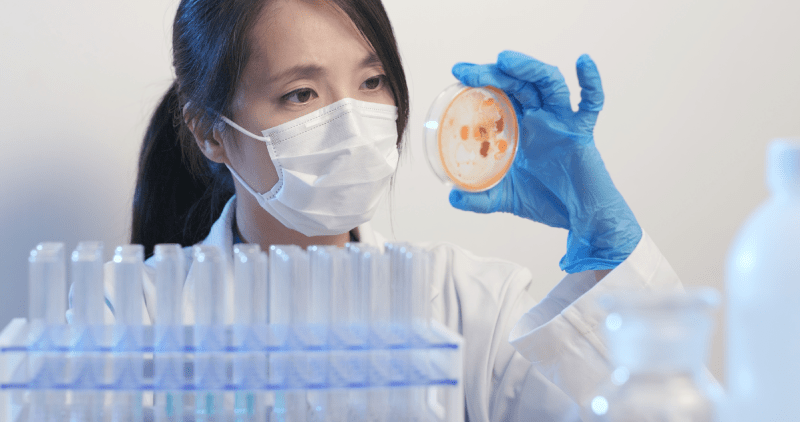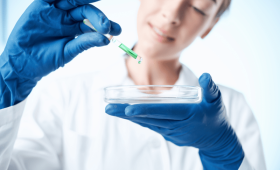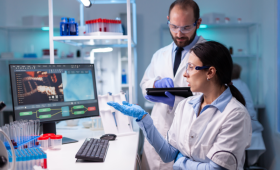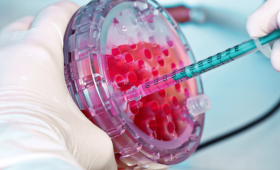Leukemia Stem Cell Treatment in Turkey
Leukemia (blood cancer) treatment is one of the most complex and vital areas of medicine. In situations where traditional chemotherapy is insufficient or in high-risk cases, stem cell transplantation (bone marrow transplant) stands out as the most powerful treatment option for patients to regain their health. Turkey has become a global center in this field with its advanced technological infrastructure, international accreditations, and experienced teams. This guide deeply examines the stem cell transplantation process, its risks, success factors, and patient suitability criteria, offering a transparent roadmap for individuals who are about to make this life-changing decision.
What Is Leukemia Stem Cell Treatment?
Leukemia stem cell treatment is the process of transplanting healthy blood stem cells (usually intravenously) into the patient following the complete destruction of the diseased bone marrow through high-dose chemotherapy and/or radiation therapy.
These cells multiply in the bone marrow cavity where they settle, rebuilding the patient’s immune and blood systems. The goal is to eliminate leukemia cells and establish a new bone marrow that produces healthy blood cells. This process typically necessitates a long and isolation-requiring hospital stay due to the intense nature of the conditioning regimen and the period the patient is immunocompromised.
How Does This Treatment Cure Leukemia?
Stem cell treatment cures leukemia through two main mechanisms. Firstly, the high-dose conditioning regimen (chemotherapy/radiotherapy) applied before the transplant completely destroys the existing cancer cells and the diseased bone marrow in the body. The second and more critical mechanism, especially in allogeneic (from someone else) transplants, is the Graft Versus Leukemia (GvL) effect that arises. The immune system that develops from the newly transplanted stem cells recognizes the remaining leukemia cells as foreign and attacks them, significantly reducing the risk of disease recurrence. This immunological attack is key to long-term disease-free survival.
What Is The Success Rate Of Leukemia Stem Cell Treatment In Turkey?
Turkey boasts a high success rate in stem cell transplantation that aligns with high international standards. Success depends on the type of leukemia (e.g., Acute Myeloid Leukemia or Acute Lymphoblastic Leukemia), the stage of the disease, the patient’s age, general health status, and the donor’s tissue compatibility. Successful transplant centers report five-year disease-free survival rates ranging from 50% to 80% in suitable patients, consistent with international data. Turkish centers are highly competent in achieving these rates, particularly when genetically fully matched donors are available for the transplant procedure.
Who Are Suitable Candidates For Stem Cell Transplantation?
Suitable candidates for stem cell transplantation are generally patients with high-risk leukemia types or those whose disease has relapsed despite initial chemotherapy treatment. Candidates must have sufficient organ functions (heart, lungs, kidneys) to withstand the intensity and side effects of the transplant process. While age is not the sole determinant, transplantation is generally considered for patients under the age of 70. The suitability decision is made by a multidisciplinary board following a detailed review of the patient’s medical history and comprehensive organ function tests, ensuring they can survive the demanding therapy.
What Does Allogeneic Transplantation Mean?
Allogeneic stem cell transplantation is a type of transplant where healthy blood stem cells are sourced from a donor other than the patient (usually a sibling, family member, or an unrelated matched volunteer). This type of transplant is the most common and effective in leukemia treatment because the transplanted immune cells can fight against the leukemia cells remaining in the patient’s body (the Graft Versus Leukemia effect). However, the greatest risk of this method is the possibility of the new immune system attacking the patient’s healthy tissues, known as Graft Versus Host Disease (GVHD).
When Is Autologous Transplantation Preferred?
Autologous stem cell transplantation is a type of transplant where the patient’s own healthy stem cells are collected and frozen before high-dose chemotherapy and then reinfused back into the patient afterward. This method is generally used for certain subtypes of leukemia or diseases like lymphoma. Autologous transplant avoids the need for a donor search and carries no risk of GVHD, making it safer and faster. However, because the transplanted cells may contain cancer and there is no Graft Versus Leukemia effect, the risk of disease relapse may be higher compared to an allogeneic transplant.
Why Is Tissue Matching (HLA Matching) Critical?
Tissue matching, scientifically known as Human Leukocyte Antigen (HLA) matching, is vitally critical for the success of allogeneic stem cell transplantation. HLA are proteins that allow the immune system to distinguish its own cells from foreign ones. The higher the compatibility between the donor and the patient, the lower the risk of the transplanted cells rejecting the patient (Graft Failure) or attacking the patient’s tissues (GVHD). The ideal scenario is achieving 100% full compatibility among siblings, but high compatibility is also sought in unrelated transplants to maximize successful engraftment and minimize complications.
How Is A Suitable Donor Searched For And Found?
The search for a suitable donor primarily begins among the patient’s siblings, as the likelihood of genetic compatibility is highest. If a fully matched sibling is not found, the search continues in national bone marrow banks like the Turkish Stem Cell Coordination Center (TÜRKKÖK) and international donor registries (e.g., WMDA). The search for an unrelated donor can sometimes take months. The increased success rate of partially matched (haploidentical) transplants in recent years has somewhat reduced the difficulty of finding a suitable donor, broadening the pool of potential candidates.
How Does The Pre-Transplant Preparation Process Work?
The pre-transplant preparation process involves physically and psychologically preparing the patient for the transplant. During this process, comprehensive cardiological, pulmonary, and infection screenings are performed to determine if the patient’s organ functions can withstand the conditioning regimen. The patient’s central venous catheter (Hickman catheter) is inserted. Most importantly, detailed education and psychological counseling are provided to ensure the patient and family understand the transplant process, potential complications, and long-term follow-up requirements, promoting realistic expectations and compliance.
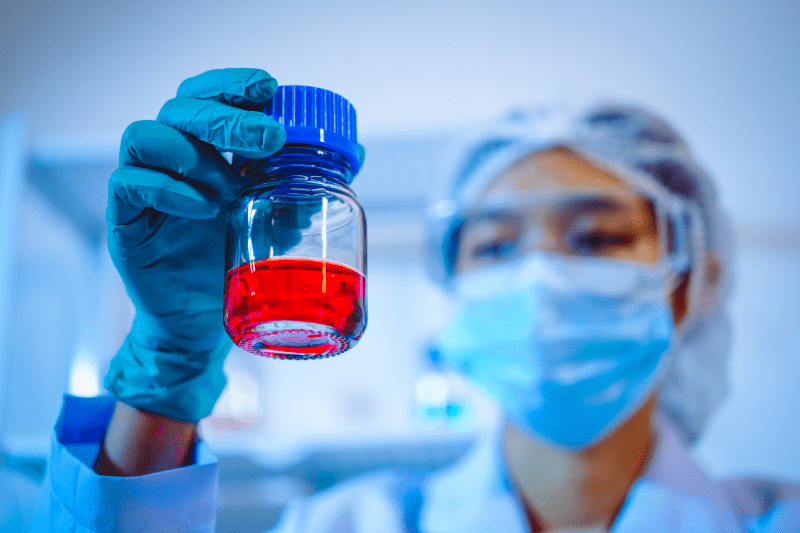
Why Is Chemotherapy Applied Before Transplantation?
The high-dose chemotherapy (and sometimes radiotherapy) applied before transplantation is called the “conditioning regimen.” This regimen has two main goals: First, to destroy all remaining leukemia cells in the patient’s body (maximal anti-cancer effect). Second, by suppressing the patient’s bone marrow, to create a biological space for the new stem cells to settle and engraft. Since this regimen completely resets the immune system, the patient becomes extremely vulnerable to infections during this period, necessitating strict isolation protocols.
How Long Does The Transplantation Procedure Take?
The stem cell transplantation procedure itself, meaning the infusion of stem cells into the patient, is extremely simple and generally takes 1 to 5 hours. This procedure is performed intravenously, much like a blood transfusion, through the previously placed central venous catheter. The real challenging process is the isolation period during the pre-transplant conditioning therapy and the post-transplant period (usually 2-4 weeks) when the patient is at high risk while the new stem cells engraft in the bone marrow and reconstitute the immune system.
What Is The Length Of Hospital Stay After Transplantation?
The length of hospital stay after transplantation varies between an average of 3 to 6 weeks, depending on the treating center and the patient’s general condition. During this time, the patient is kept in a special isolation room because the immune system has been zeroed out. To be discharged from the hospital, the patient’s new stem cells must have successfully engrafted in the bone marrow, the white blood cell count must have reached a safe level, and the risks of serious complications like fever and infection must be controlled.
What Factors Determine The Cost Of Treatment?
The cost of leukemia stem cell treatment depends on many complex factors. These include; the type of transplant (allogeneic transplant is more costly), whether the donor is unrelated (donor search and activation costs), the patient’s age and general health status, the required additional intensive care or monitoring period, and the scope of the included health tourism package (accommodation, transfer, interpreting). Centers in Turkey maintain their international accreditations while offering this global treatment at more competitive prices.
Is Treatment Legal And Reliable In Turkey?
Yes, stem cell transplantation applications in Turkey are conducted only in authorized and internationally accredited centers within the framework of very strict ethical, legal, and technical regulations determined by the Ministry of Health. These centers must comply with international quality standards in cell collection, processing, and transplantation procedures. Turkey’s legal framework aims to ensure patient safety and guarantee the quality of all cells used in the treatment, which makes the therapy highly reliable and ensures patient protection.
What Side Effects Are Seen During Treatment?
The side effects of stem cell treatment are primarily due to the high-dose chemotherapy and radiation therapy applied before the transplant. Common side effects seen include nausea, vomiting, loss of appetite, mouth sores (mucositis), severe hair loss, and an increased risk of infection. In allogeneic transplants, there is the additional risk of Graft Versus Host Disease (GVHD), where the transplanted immune system attacks the patient’s tissues. These side effects are closely managed with supportive treatments and medications to ensure patient comfort.
What Is Graft Versus Host Disease (GVHD)?
Graft Versus Host Disease (GVHD) is the most serious and complex potential complication of allogeneic stem cell transplantation. It occurs when the transplanted donor T cells recognize and attack the patient’s healthy tissues such as the skin, liver, and digestive system as foreign. GVHD can range from mild skin rashes to life-threatening organ failure. Both acute and chronic forms exist. Immunosuppressive drugs are used for the management of GVHD, and this condition significantly impacts the long-term success of the treatment, requiring careful and continuous monitoring.
How Is The Risk Of GVHD Reduced?
The most effective way to reduce the risk of Graft Versus Host Disease (GVHD) is to ensure the highest possible HLA compatibility between the donor and the patient. A fully matched sibling donor minimizes this risk. Additionally, immunosuppressive drugs (e.g., Cyclosporine or Methotrexate) are given to the patient before and after the transplant to keep the aggression of the new immune system under control. In recent years, techniques like T-cell depletion or special drug regimens used in haploidentical transplants have also been effective in reducing the risk of GVHD.
How Is The Post-Transplant Recovery Process Managed?
The post-transplant recovery process requires patience and meticulousness. Even after discharge from the hospital, patients remain at high risk for infection for several months. During this period, the patient must live in a sterile environment at home, avoiding crowds and environments with a high risk of infection. Nutrition is managed with a special diet (well-cooked, pasteurized foods) to minimize the risk of infection. Regular blood tests and physician follow-up are the most critical components of the recovery process, which can be demanding on both the patient and the family.
How Are Stem Cells Administered To The Body?
Stem cells are administered to the body, in the simplest terms, through a blood transfusion. The cells, contained in a special bag, are slowly infused into the vein via the central venous catheter (Hickman or Port) that was previously placed in the patient. This is a painless procedure, and the cells naturally migrate through the circulatory system to the bone marrow spaces where they settle. This process of settling and multiplication is called “engraftment” and usually takes several weeks.
What Evaluations Are Done Before Treatment?
The evaluations performed before treatment are comprehensive to determine the safety and success of the transplant. Detailed cardiac (ECHO, EKG), pulmonary (lung function tests), and kidney/liver function tests are performed to check if the organs can tolerate the conditioning regimen. Screening for infections, dental check-ups, and the patient’s psychosocial status (motivation, support system) are also meticulously assessed. This multidisciplinary evaluation enables the transplant team to make the most appropriate and safest decision for the patient.
Why Should Turkey Be Preferred For Transplantation?
Turkey is preferred in the field of stem cell transplantation due to its experienced teams, internationally accredited laboratories, and state-of-the-art isolation units. Services are offered at European and American standards, while geographical proximity and more competitive costs provide a major advantage for international patients. Furthermore, expertise in advanced techniques such as haploidentical transplants (partially matched) offers an important solution for patients facing difficulties in finding a donor.
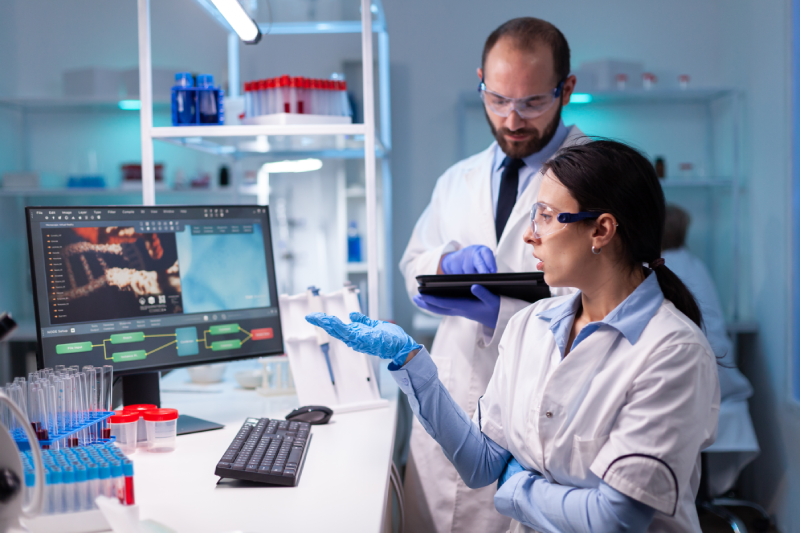
What Support Is Provided To Patients Coming From Abroad?
Comprehensive health tourism services are provided to patients coming from abroad to facilitate the treatment process. These include VIP transfers from the airport, suitable accommodation options for the pre- and post-transplant period, multi-lingual interpreting support during hospital and doctor visits, and personal patient coordination to manage logistics and medical coordination throughout the entire process. These supports ensure that patients feel secure and comfortable in a foreign environment, allowing them to focus on recovery.
How Should Nutrition Be During Treatment?
Nutrition after stem cell transplantation must be extremely strict and sterile to minimize the risk of infection. Patients adhere to a special diet called the “neutropenic diet” during the period when their white blood cell counts are very low. This diet strictly prohibits potential sources of bacteria, such as raw fruits/vegetables, undercooked meat, unpasteurized dairy products, and food sold openly. Ensuring all food is hygienic and thoroughly cooked is vital to reducing the life-threatening risk of infection during this period.
What Is The Risk Of Infection After Transplantation?
The risk of infection after transplantation is highest in the first 2 to 4 weeks, especially when the bone marrow is completely suppressed and the new stem cells have not yet engrafted. During this period, the patient is extremely vulnerable to bacterial, fungal, and viral infections. The risk decreases as the white blood cell count returns to normal. Patients are kept in isolation rooms and use prophylactic antibiotics, antifungals, and antivirals to minimize this risk. This is the most sensitive period, as infection is a leading cause of death after transplantation.
When Does Sexual Life Resume After Transplantation?
The return to sexual life after transplantation depends on the patient’s recovery speed, general energy levels, and immune system status. Generally, it is expected that the patient’s all blood counts return to normal, the risk of GVHD is stabilized, and physician approval is obtained before resuming sexual activity. This period usually takes several months after the transplant. Due to the risk of infection, adherence to high hygiene rules and protection (condom use) during sexual activity is mandatory.
How Often Should Post-Transplant Check-Ups Be Done?
The frequency of post-transplant check-ups is intensive during the first year. After discharge, check-ups are done weekly or every two weeks for the first 3 months, then monthly until the 6th month, and quarterly until the end of the first year. During these check-ups, a complete blood count, organ function tests, and signs of possible relapse or GVHD are closely monitored. From the second year, check-ups are generally spaced out to twice a year, and in the long term, once a year, but this follow-up continues for life.
Is A Second Transplant Possible If Leukemia Relapses?
Yes, a second stem cell transplant (secondary allogeneic transplant) is technically possible if leukemia relapses. The decision for a second transplant depends on the timing of the relapse, the aggressiveness of the recurring leukemia, the patient’s general health condition, and whether the person used as the donor in the first transplant can donate again. Although a second transplant carries higher risks than the first, it is considered a last-resort treatment option that can offer the patient a chance for long-term survival in some cases.
Where Are Stem Cells Collected From?
Stem cells for leukemia treatment are usually collected from the donor’s peripheral blood. This is done by giving the donor special medications (growth factors) for a few days to mobilize the stem cells from the bone marrow into the bloodstream, followed by collection using a method called apheresis (separating cells by passing blood through a machine). Less frequently, stem cells can also be collected from the bone marrow (in an operating room setting) or from umbilical cord blood. The physician determines which source to use based on the donor and patient’s condition.
Is The Transplant Different For Pediatric Leukemia Patients?
The transplant process for pediatric leukemia patients is fundamentally the same as for adults, but it involves some differences and special requirements. Conditioning regimens used in children are planned more carefully, considering their organ development and potential long-term side effects. Psychosocial support teams in pediatric hospitals work more intensively to help the child and family cope with stress. Managing GVHD and other complications in children can be more challenging due to their increased physiological sensitivity.
When Does The Return To Normal Life Occur After Transplantation?
The full return to normal life after transplantation can take 6 months to 1 year, depending on the patient’s recovery speed and the presence of complications like GVHD. The first 3-6 months are the most restrictive period. Patients can usually start returning to work or school after 6 months, but they are asked to avoid places like public transport, crowds, and high-infection-risk environments (cinemas, concerts) for a full year. Full immune recovery and adaptation to a normal lifestyle usually occur after the one-year mark.
What Are The Risks Of Being A Donor?
The risks of being a donor vary depending on the stem cell collection method, but are generally low. For stem cells collected from peripheral blood, the donor may experience temporary bone pain and fatigue caused by the growth factor drugs. Bone marrow collection requires general anesthesia, carrying the risk of anesthesia and short-term pain at the collection site. However, the donor’s health is always the top priority, and every measure is taken to ensure no permanent health risk occurs.
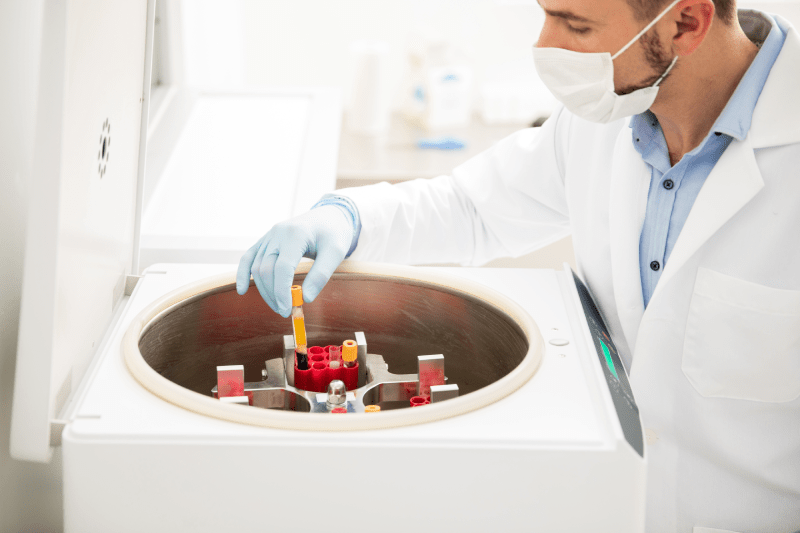
Is Radiotherapy Used During Transplantation?
Radiotherapy (radiation treatment) can be used in the pre-transplant conditioning regimen, but it is not applied to every patient. Radiotherapy is generally used in the form of total body irradiation (TBI) to achieve the strongest anti-cancer effect to destroy leukemia cells or in cases where the leukemia has spread to the central nervous system. TBI is part of the pre-transplant conditioning. However, due to its long-term side effects (cataracts, infertility), non-radiotherapy regimens are more commonly preferred today.
How Important Is Psychological Support After Transplantation?
Psychological support after transplantation is critical for the patient’s treatment success and quality of life. Long periods of isolation, coping with severe side effects, and anxiety about disease relapse can lead to anxiety, depression, and post-traumatic stress disorder in patients. Therefore, regular support from a psychologist or psychiatrist for patients and their families, both before and after the transplant, accelerates emotional recovery and facilitates the process of adjusting back to life.
What Are The Long-Term Effects Of The Treatment?
The long-term effects of stem cell transplantation primarily depend on the conditioning regimen and the presence of GVHD. Long-term effects can include infertility, hormonal problems like hypothyroidism, cataracts, or the risk of secondary cancer. Chronic GVHD can cause permanent damage to the lungs, eyes, and skin. To manage these risks, patients must be included in a lifelong long-term follow-up program after transplantation and undergo regular check-ups.
How Does Medication Use Change After Transplantation?
Medication use after transplantation includes intensive immunosuppressants and infection preventives in the first few months. In allogeneic transplants, immunosuppressive drugs (e.g., Cyclosporine, Tacrolimus) used to reduce the risk of GVHD may continue for months or even years. Infection-preventive drugs (antibiotics, antivirals, antifungals) are generally used for the first year. Medication regimens are continuously adjusted based on the patient’s condition and blood counts and are gradually tapered off under physician supervision.
Stem cell transplantation for leukemia is a promising but challenging process. Receiving this life-saving treatment with high expertise and according to international standards is the most critical step for a successful outcome.
To learn more about accredited transplant centers in Turkey, expert teams, and personalized treatment plans, and to begin your challenging treatment journey with confidence, you can contact Cure Holiday.
